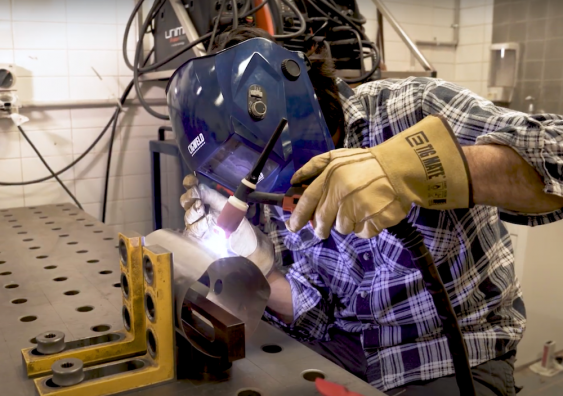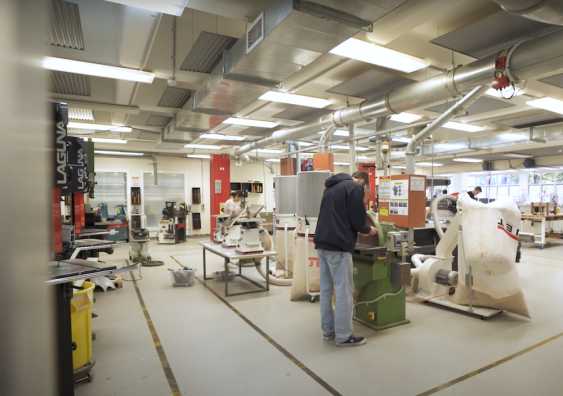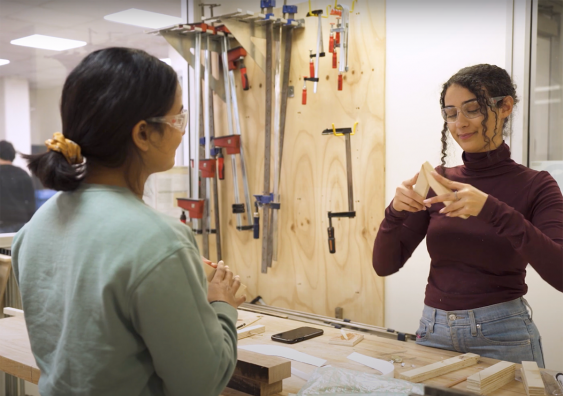The pandemic will shape the careers for next-generation industrial designers, but it won’t define them, says UNSW expert.

Industrial design in a post-pandemic world will be more health-focused. Photo: UNSW.
The coronavirus is testing the design industry, but a new generation beckons. One more agile, resilient and ready to take on the challenges posed in a post-pandemic world.
UNSW Built Environment Industrial Designer Gonzalo Portas says industrial design in a post-pandemic world will be more health-focused than ever before.
“I think there will be major shifts towards professional health and safety in the field … in the future, because we’ll want to reduce the risk of this occurring again,” he says.
The industrial designer expects to see significant investment at the intersection of health and design. He believes the next-generation industrial designer will be most influenced by the pandemic, adding that the future design curriculum would need to prepare any new designer for the global recovery post-pandemic.
“They will be looking at the pandemic as an important social issue,” he says. “It’ll be a normal thing that students will be looking at when they’re doing a capstone project or an honours program … and we will find that design students will be coming to learn about those things.”
“The health sector is just going to have to grow, to have [more] people moving into those spaces, and so we will identify those areas,” the design educator says. “I think there’s a great opportunity that comes from these crises sometimes and designers are great at identifying them.”

Designers are looking forward to returning to workshops and studios. Photo: UNSW.
In particular, he anticipates an increased demand for designs that automate everyday high-touch surfaces and environments, like public bathrooms.
“I imagine everything’s going to become automated,” he says. “We already have the technology like voice control and motion sensing, which are all the things that have come out of industrial design, so I think that all those things [will be] implemented more widely.”
While many have taken to working from home, those in the design field are among those who can’t wait to return. And the lecturer says that when the time comes, that is when designers will hit their stride.
“Designers need to be doing what they do best, and that is designing in a studio,” he says.
“The reality is that the experience of working from home is very different and somewhat lesser for a designer. Some of the best solutions that we see at the moment are very reactive, but I think with a little bit of time, we will see some exciting designs come out of Australia that deal with these issues, and [a focus on] design for a better experience.”
The design industry has been particularly hamstrung by social distancing restrictions, unable to access the workshop and other design spaces.
“Designing in isolation, you don’t end up with the same results. You do miss out on this vital social aspect of design where we create collaboratively; we bounce ideas off of each other, it’s an almost tactile thing that we do.”
“I think that [for designers], this has brought to light that online is perhaps not the be-all and end-all,” he says. “While we have shown we can do this, and do it well; I still think the best way to learn and grow and design will always be in person.”

In-person collaboration will continue to be a vital social aspect of design. Photo: UNSW.
But on the plus side, designers will be more prepared for the next crisis, he says.
“In this crisis, there is [an] opportunity to do some wonderful things; I think what we are doing with [digital] learning, we’re actually doing really well. I think it shows our resilience, and it shows the way that we all [can] adapt because we have eased into this so seamlessly.
“If there is one positive for [future designers] … it does prepare them for a different world. I don’t think it’ll ever go back to completely normal as we remember.”








